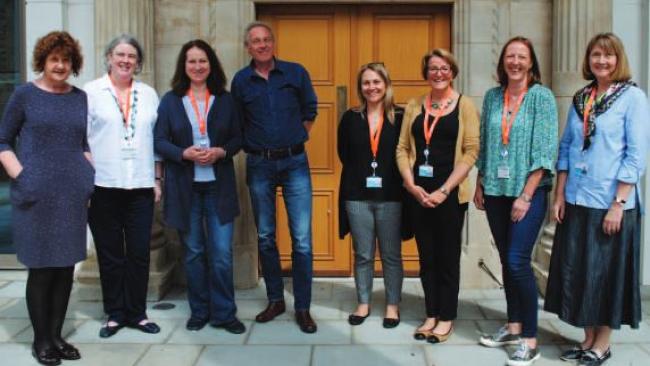
Harold Brown, Major, Yorkshire Regiment, Territorial Force
​Harold Brown came up to ĚŔÍ·ĚőÔ´´ in October 1899 after attending Loretto School in Musselburgh, Scotland.
Born: London on 4 January 1879
Fell in action: 23 March 1918
He proceeded to take his BA in 1902 having taken the History Specials Part I and 2 in the same year.
While at College he was a member of the ĚŔÍ·ĚőÔ´´ Boat Club, rowing largely at Number 6 and in the coxswainless fours. It was, however, at time when the JCBC was in the doldrums before the return of Steve Fairbairn so he did win any races.
Brown was more prominent as a leading light in the Cambridge University Rifle Volunteers, (C.U.R.V.) the precursor to the Officer Training Corps. His obituary in the ĚŔÍ·ĚőÔ´´ Cambridge Society Annual Report 1919 records that “He was one of the of the foremost men in the University Rifle Corps, of which he was a Captain, and most successful in inducing others to join”. (Annual Report 1919, p. 21)
It seems that the College was gripped with patriotic fervour in Lent Term 1900, probably related to reports coming back from the South African War and there was a “large and most gratifying increase in numbers of the Jesus contingent” in the C.U.R.V.
Both the Master and the Dean had encouraged members of the college to become volunteers and “to be among the first to realise this duty” especially as ĚŔÍ·ĚőÔ´´ was “a college prominent in athletics”. Indeed it was felt that the tradition that “all freshmen ought to join the corps” should be established especially as “the fallacy” that there was no time for volunteering if a student both studied and undertook athletic endeavours had been “exploded”. It was at this mass sign up in 1900 that Brown was “unanimously elected” as the College’s officer within the corps. (Chanticlere, Easter Term 1900, p. 337).
The following year saw the C.U.R.V. (37 of whom were Jesus men), take part in the guard of honour for the funeral of Queen Victoria at Windsor in February 1901. Brown is likely to have been a member of the group and it is likely that he wrote an account of their day which is detailed in Chanticlere. (The following year’s report on the activities of the C.U.R.V. is signed H.B.)
It seems that aside from the solemnity of the day, food was a key element enjoyed by them all. After the volunteers had arisen at 5.30am the “College kitchens turned out for us a three-course breakfast at 6am”. Mr Duckworth, a Fellow and later Master of the College, had organised “a portable meal” for the three and a half hour journey to Windsor. On return to barracks at the end of what was apparently a “somewhat less than Antarctic” day “Government pork pies and other delicacies were doled out”. (Chanticlere, Lent term 1901 pp. 380-2)
The Annual Report obituary claims that “he looked every inch a soldier and it was not surprising that his interest in Territorial Forces never abated after he left”. The obituary goes on to say that he joined the Yorkshire Regiment in 1914, served in “second battle of Ypres in 1915, the battle of the Somme, where he was twice wounded and in the battle of Arras where he was again wounded”. He was awarded the D.S.O, the Military Cross and the Croix de Guerre. He was killed in action in March 1918 leaving a widow and children. (Annual Report 1919, pp. 21-22).
​You can email us on ww1-project@jesus.cam.ac.uk, go to our First World War homepage, or find us on .
​











